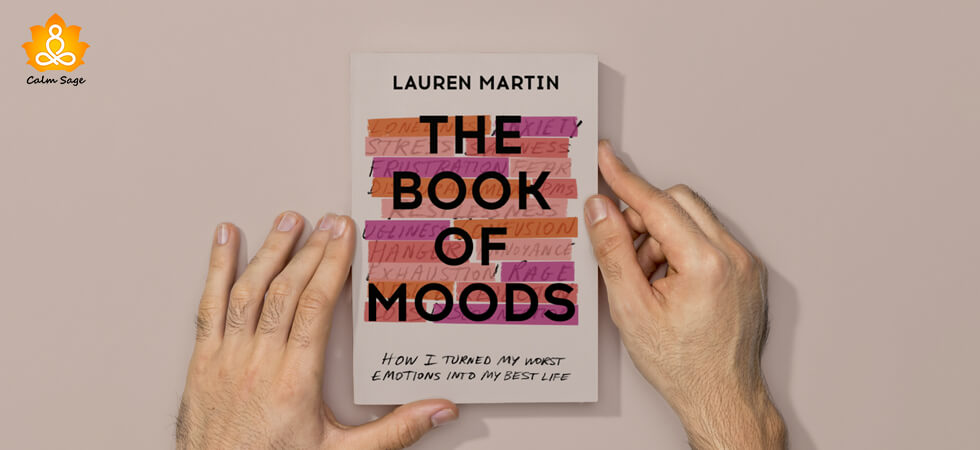‘The Book Of Moods’: Science Of Moods Explained By Lauren Martin

‘The Book Of Moods: How I Turned My Worst Emotions Into My Best Life’ is a beautifully researched book by author Lauren Martin. She wrote the book after 5 years of research during which she struggled with her emotions like inferiority, anxiety and irritability. She couldn’t have changed her perception unless she met a stranger who was also dealing with a similar situation.
Also Read: How To Release The Inner Happiness Trapped Within You
She started learning how different moods changed her but at the same time, how can she change them all. All the key insights of ‘The book of moods’ mentioned in the blog are derived from Lauren’s personal experiences and may help every individual to deal with their personal emotions.
Here are the sprinkles of her unveiled wisdom to spread happiness and mental satisfaction.
Key Insights Of ‘The Book Of Moods’ by Lauren Martin
1. Bad Mood Is The Reflection Of ‘You’

Often we forget to judge our own mood and feel that we either fall into it or it’s just a bad mood day. However, the reality is a little more complicated than the same. If we go in scientific terms, mood is a prolonged form of emotion. Neuroscientists have also confirmed that a real mood response stays with your brain for about 60 to 90 seconds. Even then, how come an emotion changes our mood for prolonged periods?
It is because of our lack of awareness or mindfulness that we are not aware of emotional triggers in the first place. We all have certain emotional triggers which shall be understood clearly. For example, someone talking about your ex and making fun of previous relationships could turn your mood in a bad mode. Once you agree to your emotional triggers, it becomes much better to handle the mood turns.
Also Read: Master Your Mood Swings: 5 possible causes of severe Mood Swings
2. Treating Yourself Is A Self Treat

This insight from the book wants to make you realize things that fill you up with energy and activities that drain you off. For example, if you consider your will power as your energy source, it is full of goodness in the early morning. However, as soon as you run throughout the day with different actions, the energy runs out. You cannot make good decisions by late evening but this is where your treatment towards yourself helps you.
As will power and self-control are finite resources, it’s up to you how to cure them timely. Give yourself a break, listen to some soothing songs, take a walk in nature, eat a Snickers bar and restore.
3. Stress Doesn’t Need To Always Bad

Stress could be modulated according to the way you perceive things which bring you in stressful situations. The technique called ‘Anxiety reappraisal’ refers to language in order to reframe difficult feelings.
In one such study, participants were asked to sing a song publicly, a common situation which is stressful for many people. However, they were asked to tell themselves either ‘I am excited’, ‘I am nervous’ or nothing. The computerized recording showed that the group which said ‘I am excited’ performed better than the others in terms of voice and pitch. Even when they gave a speech later, they were persuasive and confident enough.
Also Read: Ways to Develop More Confident Body Language
Rewiring our brains to face difficult moments is the best way to live a longer life.
4. Family Fights Erupt From Family Roles

One of the main stress triggers in the family is ‘out of role’ interactions. Every individual in a family is casted in a certain role but whenever we try to make someone act out of their casted role, fights happen. Based on this concept, family psychologist Virginia Satir has identified different types of family roles in ‘The book of moods’.
4.1. Blamers: They are usually on your side but jump to the other side if they feel disrespected, betrayed or slighted.
4.2. Distractors: They are those who can steer the conversation in a light mood by making everyone laugh and sending positive vibes.
4.3. Placaters: Such members hide their feelings while obsessing over other’s needs. They delay their own underlying tension by keeping everyone away from fights.
4.4. Computers: They are similar to distractors but usage of facts and reasoning is important to them. At the same time, they keep themselves away from emotional depths.
4.5. Levelers: They are emotionally mature and understand everyone’s point of view patiently while being expressive in their own way.
Also Read: Mentally Unsupportive Family? Here’s What To Do
5. Moods Are Absolutely Contagious

The most important part of ‘The book of moods’ is that your mood doesn’t affect you alone but others surrounding you. Imagine coming back from office in an irritated mood and bashing your anger on your spouse.
You will ultimately disrupt their mood too. Researchers have proved that human beings actually ‘catch’ emotions and those whom you interact with carries your mood.
As soon as you learn to control your bad mood, you would notice the positive reactions of people towards you. Since your mood comes with a chain reaction, make the world a nicer place to live with your love and kindness.
Wrap-up
‘The Book Of Moods’ by Lauren Martin is a must read for every human being to decipher their own emotions and look inward.
Also, understand your emotions with emotional wheel and learn to adjust them with your own brain’s capability.




















